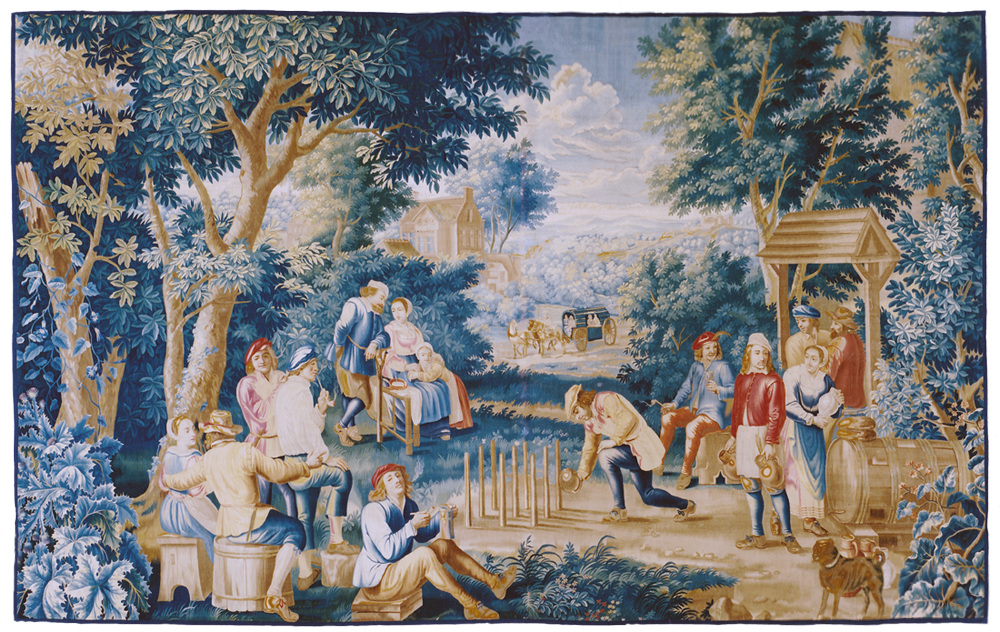Game of Nine Pins
A fine Teniers tapestry, Lille, France,
circa 1720, from the workshop of Guillaume Werniers (active 1700-1738).
Height: 9ft. 2in. (280cm) Width: 14ft. 5in. (438cm)
Scenes of country folk (boers) in daily life were adapted from the paintings of David Teniers II (1610-1690). These were popular with the ascendant bourgeois class who found them humorous and they became a fashionable style of tapestry during this period. Every important workshop in Brussels produced tapestries in this style.
Guillaume Werniers came from Brussels to join his father-in-law, Jan de Melter who was also from Brussels, at de Melter’s workshop in Lille. Before his death in 1698, De Melter wove at least one recorded set of Teniers design, but it was Werniers himself who after Melter died began to expand the production of the Teniers sets. Most of the Brussels workshops produced Teniers scenes though they all seemed uniform in their depiction, Werniers production had an identify quite different from the Brussels work, the people depicted were more than just ordinary country folk, each had an individual character.
Werniers’ tapestries come with various borders, but some have no borders at all, made to fit into wall paneling. Of the recorded Nine Pins subjects all are without borders; some are signed ‘G.WERNIERS’. Made with wool and silk threads, retaining fresh original colours.
Similar Example: The Asil Nadir Collection, London.
Literature: H.C. Marillier, Handbook of the Teniers Tapestries, 1932, plate 52a.
Price : P.O.A.
Share this itemPrint info/picture sheet
Arrange a viewing
Enquire further
This is one example from our extensive collection of rare carpets and tapestries
